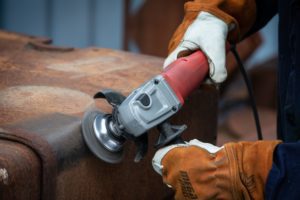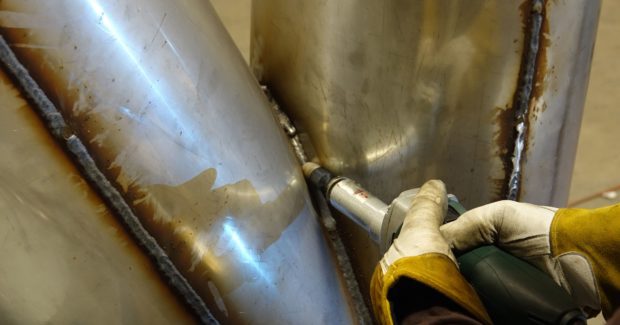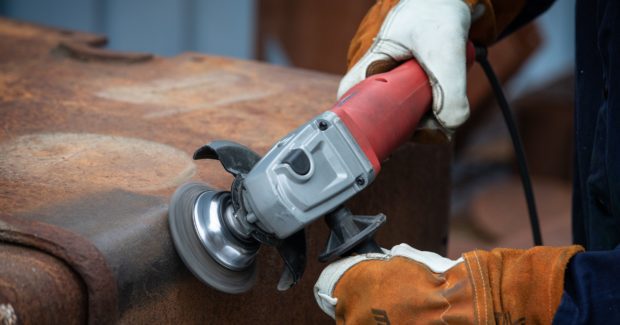Tips for Overcoming Common Challenges When Using Wire Brushes
Utilizing the proper wire brush for your job goes a long way toward optimizing brush performance, getting the job done faster and in a safer manner.
Posted: January 29, 2022
SURFACE CONDITIONING
By Pete Hutchinson
When operators use wire brushes with the proper technique and follow best practices, these products are an excellent way to efficiently remove contaminants, clean welds or prepare a part for the next step in the assembly process.
However, there are some common challenges operators may encounter when using wire brushes. These can result in less-than-optimal performance and reduced product life — costing a facility both time and money.
In most cases, these challenges can be addressed through proper technique and product selection. This article shares some tips to improve wire brush performance and see the results you want.
Wire Brush Applications and Benefits

Wire brushes are a good choice for a wide variety of applications. They can be used on many different materials but are most often used to prepare, clean and finish metal surfaces and parts. Whether the job involves deburring, weld cleaning or removing rust, dirt or mill scale, wire brushes have several advantages.
Because wire brushes are non-loading, they will remove the coating, rust or dirt from a base material without loading up with the removed material. If the same job was attempted with an abrasive product like a flap disc, the operator could experience product loading that can stop the disc from performing as needed. This isn’t a concern with wire brushes.
Another advantage of a wire wheel is the ability to clean the base material without changing the part’s dimension. An abrasive will dig into the base metal and can change the part shape, but a wire brush will remove only surface contamination without altering the part.
Addressing Common Challenges
While wire brushes offer great performance in the right applications, following best practices and selecting the right product for the job are key to optimal performance. Consider these five common challenges when using wire brushes and how to resolve them:
- Thrown wires
One of the most frequently mentioned issues regarding wire brushes is thrown wires and the risk they pose to operator safety. Thrown wires typically occur when the operator uses the wrong product for the job. If the wire brush doesn’t have enough aggression for the application, it’s likely the operator will push the brush harder into the workpiece, bending the wires of the brush at a high speed. This weakens the wires and can cause them to break and fly off the wheel — posing a safety hazard. As more wires break and come off, this can also throw the wheel out of balance, further intensifying the problem. To avoid thrown wires, make sure the brush being used is the right one for the job. Wire brushes come in many wire diameters, knot styles and configurations, and each type will change the aggression of the wheel. If you feel the need to press harder to get the results you want when using a wire brush, it’s very likely you are using the wrong product. A good rule of thumb is to use the finest wire diameter that will do the work without requiring excessive force on the brush. A finer diameter means more wires can fit on the brush — and there are more wire tips doing the work.
- Shortened brush life
If wire brushes are wearing out faster than expected, this often points to improper technique or using the incorrect brush. Cleaning in a tight corner, for example, calls for a controlled flare end brush, which has a chiseled face that allows easy access to corners, rather than a standard end brush that is not designed for this. Because each application is different, wire brushes are not one size fits all. Ideally, you should pick the correct tool and brush for each job to help optimize product life and efficiency.
- Poor cleaning efficiency
Brush quality and design play important roles in a product’s performance and efficiency. While a cheaper brush can save money up front, it often ends up costing more in the long run due to poor performance, shorter life and frequent product changeover. When looking for a knotted cup brush for instance, look for one that has pretrimmed wire tips, which provide the highest level of cleaning efficiency right out of the box. Wire brushes without pretrimmed tips, commonly known as hurricane twists, may take 30 minutes to an hour of use before they are worn in enough to take advantage of the sharp wire tips.
In addition to choosing quality products, using the product correctly also helps improve efficiency. This includes using it at the proper angle to the workpiece so that the wire tips are doing the work. If you’re not getting the aggression you want to clean the material efficiently, try switching to a thicker wire diameter, a more aggressive knot or potentially a larger diameter brush to increase surface speed.
- Incorrect product choice
Many of the challenges discussed above can stem from choosing the wrong product for the job. Operators may use the same brush and same tool for every job, whether they’re trying to clean weld slag, remove a light coating of rust or debur a part. They may not realize how many wire brush options are available and how choosing one that is best suited for the specific task can greatly improve efficiency, product life and performance. Take the time to research wire brush options and test out different product styles to find the best fit — and get the best results.
- Mismatched product and material
Matching the product to the type of base material being cleaned is another important factor that helps eliminate problems. Working with stainless steel and aluminum requires using stainless steel brushes specifically designed for those materials. If a shop is working with carbon steel and stainless steel, using the same wire brush on both materials can result in cross-contamination of the stainless steel. Even storing carbon steel brushes and stainless-steel brushes near each other can result in dust from the carbon steel contaminating the stainless brush, so be careful to keep the two types separated.

Types and styles of brushes
There are many brush options designed for different tasks. Some of the main types of wire brushes used for metal preparation and cleaning are:
- Wire wheel brushes: They offer great versatility for many pre-weld, interpass and post-weld cleaning jobs. These are often used on a right-angle grinder or a bench grinder.
- Cup brushes: A great choice for efficiently cleaning larger surfaces because they provide a larger contact area. They are primarily used with right-angle grinders.
- End brushes: Smaller brushes that can be used for cleaning tight, hard-to-reach areas such as weld corners. They are primarily used on die grinders.
- Hand scratch brushes: These can be used for general cleaning and weld prep for light-duty applications. This is the only product category on the list that isn’t used on a power tool, so be aware that using a handheld brush to clean a larger area is very inefficient.
Each type of power brush is available in various configurations, including knotted or crimped wire. The general rule of thumb is the tighter the twist of the wire and the larger the wire diameter, the more aggressively it cleans.
No matter what type of wire wheel or brush is used, always let the wire tips do the work. Don’t put excessive pressure on the brush, which will stress the wire while it’s running and cause premature failure.
Optimizing wire brush performance
Picking the proper wire brush for the specific job — rather than having a one-size-fits-all mentality — will go a long way toward optimizing brush performance and results. Using the proper product for the work and following best practices for use will help you get the job done faster, extend brush life and reduce safety risks. www.weilerabrasives.com






